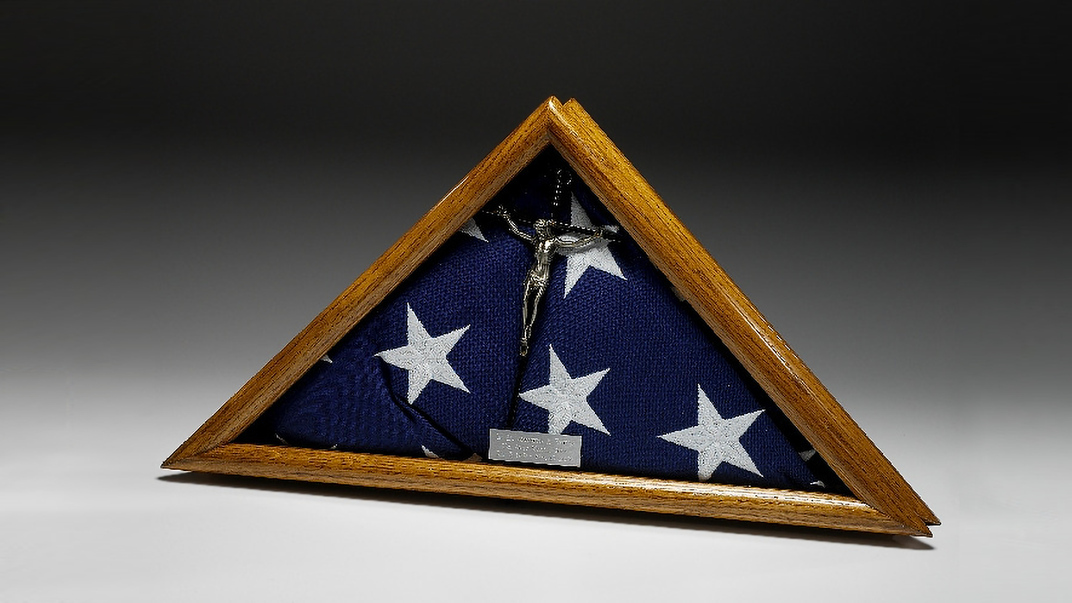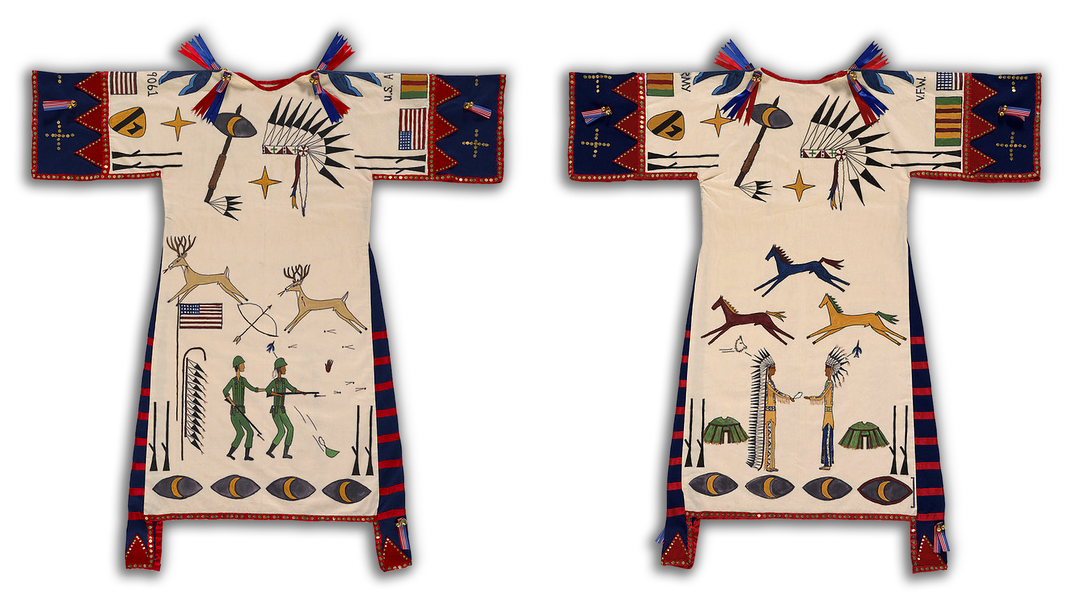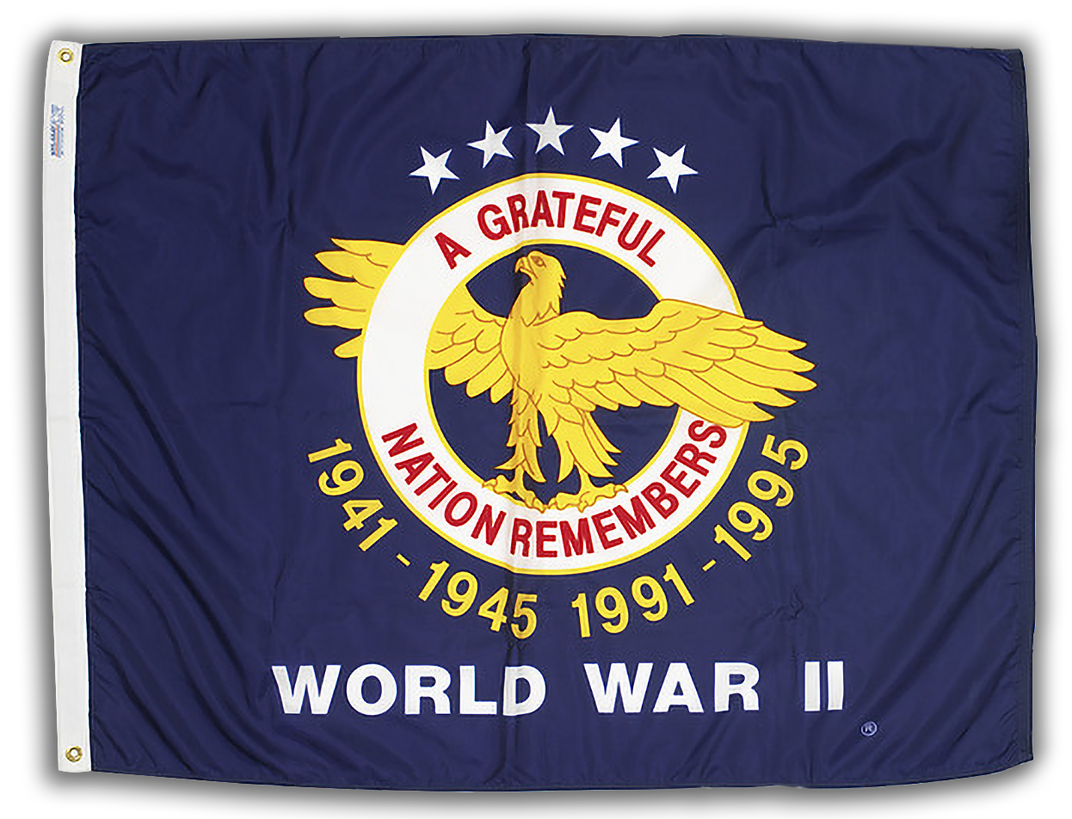NATIONAL MUSEUM OF THE AMERICAN INDIAN
Memorial Day in Indian Country
The call to serve in the U.S. armed forces has resonated for Native American, Alaska Native, and Native Hawaiian men and women from the country’s founding to the present day. Veterans are honored at Native gatherings of all kinds, where they are often asked to perform flag-raisings, blessings, and traditional acknowledgements. In powwows, veterans lead the grand entry carrying eagle staffs and national, state, tribal, and military flags, important reminders that the roots of the modern powwow lie in warrior societies. Here, Native friends share the meaning of Memorial Day for their families.
:focal(587x515:588x516)/https://tf-cmsv2-smithsonianmag-media.s3.amazonaws.com/blogging/featured/Iraq_War_drum_27-167.png)
Native American, Alaska Native, and Native Hawaiian men and women have always been defenders of their lives, lands, and way of life. The call to serve in the U.S. armed forces has resonated for Native people from the country’s founding—long before they were recognized as American citizens—to the present day. At the same time, Native communities have never taken casualties lightly. Native nations pay homage to fallen warriors as heroes with ceremonies, feasts, and prayers—formal, reverent memorials held throughout the year.
The United States officially set aside the last Monday of May to honor “all who died while serving” in 1971, but Memorial Day has its origins in the toll of the Civil War. Many histories date the holiday to May 1868, when a Union veterans’ organization called for its members to decorate soldiers’ graves with spring flowers. Five thousand people took part in the Decoration Day observance at Arlington Cemetery, honoring the 20,000 Union and Confederate dead buried there. Northern and Southern towns, however, were already holding similar memorials. In 1966, the U.S. Congress and President Lyndon Johnson declared the centennial of Memorial Day and honored Waterloo, New York, as its birthplace. Yale historian David Blight gives an even earlier date: May 5, 1865, when African Americans in Charleston, South Carolina, reburied more than 250 Union prisoners of war and honored them with a procession of thousands of civilians and Union soldiers.
Native Americans still use flowers to decorate soldiers’ and sailors’ gravesites and memorials on reservations, in Native communities, and in urban settings. For many Native Americans, and non-Natives as well, Memorial Day has become a time to pay respect with flowers and other tributes on the graves of other family members and loved ones who have passed. Veterans, however, are revered in Native communities and at Native events with a status of earned respect. Some tribes still have active warrior societies, and membership is reserved strictly for veterans. Veterans are honored at powwows, conferences, and parades and are often asked to perform important ceremonies such as flag-raisings, traditional blessings, and acknowledgements. In powwows, veterans lead the grand entry carrying eagle staffs and national, state, tribal, and military flags as an important reminder that the roots of the modern powwow lie in warrior societies.
With more than 600 federally recognized and state-recognized tribes, there is a great deal of distinction within Native America in how tribes, families, and individuals honor and remember their dead, including their deceased veterans. But virtually every community holds a patriotic, religious, and traditional gathering on Memorial Day. This year, powwows, ceremonies, and veterans’ memorials are being modified or postponed because of the ongoing world-wide pandemic. Tribes are concerned for their living veterans. Many of them are elders or are vulnerable to the coronavirus because of pre-existing conditions such as heart disease, respiratory diseases, diabetes, and cancer.

We’ve asked Native people from across North America to share the meaning of Memorial Day for them and how they commemorate it, this year or in the past.
Tomah, Wisconsin: Remembering my immediate family who served our country. Remembering my family and relatives. My family will be raising my Papa and nephew’s flags at home on Memorial Day. We are practicing social distance from our tribe’s annual flag-raising ceremony at our powwow grounds.
Bethesda, Maryland: Memorial Day for me is remembering my great-grandfather who died in World War I, my grandfather in World War II, uncle in Korea, and my father, who was a Vietnam veteran and who has since passed. As a Marine Corps veteran, I pay homage for their sacrifices as American and Native American veterans (all Kickapoos).
Ponca City, Oklahoma: The Otoe War Mothers will set flags out at the cemetery for our veterans and war mothers. This year will be the first year in many years we will not be having a dinner.
Huntsville, Alabama: Memorial Day is remembrance. Remembering those who have journeyed on with honor and respect. I will be going to a cemetery and placing flags on headstones of veterans. I will write a story of a relative who has journeyed on. This is a family collection I am putting together for my children. I want them to know their story. I want them to know what they taught me. Memorial Day is a good day to tell their story, visit their gravesite if there is one, take a ride to where they are. I will not be able to go see my relatives’ gravesites and clean them up in Crow Agency, Montana. So I will go to a cemetery here and do my veteran duty for those who have gone before us.
Morley, Alberta, Canada: Relatives who served in the armed forces who have passed on. My Grandfathers, World War I and World War II. Uncle who fought in the Dominican Republic. And my brother who fought in Vietnam. As well as all vets.
York, Pennsylvania: I observe this as a day of community reflection and remembrance. Each year we gather to tend the graves at the former Carlisle Indian Industrial School. We gather together, we clean and decorate each grave and take a moment to turn our thoughts toward the experiences of those children, to remember that in the present, and to celebrate our resilience. To conclude this, we enjoy sharing food and time with one another.
Shawnee, Oklahoma: Decoration Day is how it was referred to by my folks, Sac and Fox and Quapaw, Miami. So I have continued to call it that. On my Quapaw side, we gather on a specific day and clean our family cemetery. Included is a potluck. It’s a day filled with family and food and some hard work. On my Sac and Fox, side we feed our loved ones that have gone on throughout the year through our feasts.
Dover, Delaware: It’s a day to honor veterans before us who gave their lives to defend our country. I am a retired veteran living at Dover Air Force Base. My front yard will be decorated with flags, lights, flowers, and a wreath in red, white, and navy blue.

Colville Reservation, Washington: My grandpa, maternal, told our family growing up, You work one day a year, on Memorial Day. You take care of our people who’ve gone on before. Clean them up, turn their dirt, make our family look good with what we have. Put flags on the warriors’ who fought in the wars. You have all summer and the rest of the year to barbecue and party. He was Yakama.
Orlando, Florida: For me it is a day to remember all warriors that fought and died for their community and people.
Cochranville, Pennsylvania: A day to honor our warriors who fought to defend our freedom and are now no longer with us. On a more personal level, I remember my uncle, Orville Tiger, Seminole, who courageously served in both World War I and World War II. He was honorably interred at Arlington National Cemetery.
Anadarko, Oklahoma: Memorial Day started out as Decoration Day as the Ahpeahtone family started out early by cleaning the graves with hoes, rakes, and shovels, hauling fresh dirt to make mounds over the graves, because as the graves sunk a depression was caused. Mussel shells were collected from the Washita River. Crepe paper and thin wire flowers were placed over the smoothed earth at Rainy Mountain Cemetery and later Samone Cemetery. Grandma would tell me who was buried at each grave and how we were related, plus what tribal allotment came to us. The oldest tombstone at Rainy Mountain in our family is Kahgem, 1845–1913, who was my Grandma Lizzie’s grandma and was a Mexican child who was captured in Mexico along with others and raised by the Kiowa. My DNA chart reveals that I am 10.9 percent Indigenous Amazonian, 49.2 percent Central American, 21.9 percent Native American, and 18.0 percent Eskimo/Inuit. All my relatives are buried at Rainy Mountain, Samone, and Cedar Creek cemeteries, and we create 38 floral wreaths as Grandma taught me long ago to honor our deceased and remember family history.
Fort Hall, Idaho: Taking care of ancestors.
Mount Airy, Maryland: Prayers, respect, and homage to those brothers and sisters who paid the ultimate price for this great country, the United States. You are not forgotten. Semper Fidelis.
Lincoln, Illinois: To me, it’s a day to honor our loved ones no longer earthbound. Many have sacrificed their being for us that remain. It’s the least we could do—respect, love, and remember.
Lander, Wyoming: Just another day to me because I don't need just one day out of the year to tell those around me that I love and care for them. When they're gone, it’s too late.
Oklahoma City, Oklahoma: I remember Memorial Day as a day of carrying a load of flowers to different Indian church cemeteries. It was a day of seeing other families and a lesson in “roots.” My grandmother would point out different people’s graves and how we were related, my different friends and their relatives, spreading a sheet on the ground and serving lunch, with plenty to share with others. We only left one flower, but at the end of the day, the graves were covered with flowers.
Norman, Oklahoma: When my grandmother couldn’t travel anymore, she’d send money to relatives for them to buy flowers to decorate the graves. She’s been gone ten years now. Two years ago, I took my then-18-year-old son up to Vinita, and I was the one pointing out my grandmother’s family to him.
Baltimore, Maryland: My grandfather, James A. Sampson Sr., was a tank commander in World War II. Thankfully, he made it home. If he didn’t, I wouldn’t be here today. He always said his grandmother’s prayers carried him through. Incredibly, a Belgian man who researches the history of my grandfather’s battalion found me online and reached out. He has shared so much information that’s been gleaned from archives. Most recently, he found a record of an incident on April 11, 1945, in Germany, where my grandfather was wounded in action and two other men in his tank were killed by bazooka fire. Then he put my family in touch with surviving members of the families of those men. So I’m thinking about them this Memorial Day, like my grandfather did every Memorial Day and a lot of other days until he passed away in 2005. Now I know their names and I have been learning about their lives. Thank you, Marvin Anderson and Carl Blombaum, for your incredible sacrifice.

Detroit, Michigan: Memorial Day means honoring those who have fallen while serving this country—soldiers I've known who didn’t come back from training missions or fighting all around the world. I honor all those who serve every day and are willing to give their life. My grandfather in World War II and Korea. My father, who did two tours in Vietnam. My ex-husband, who served in the military. My twin sons, Jacob and Jackson, who currently serve in the U.S. Coast Guard and U.S. Air Force.
Normally, I go to Arlington National Cemetery to remember my parents and brother. I also visit the graves of the loved ones who can't make it over there, to let them know that they are remembered and honored. This year I will not be making the trip until this situation is less dangerous.
Tucson, Arizona: I honor the memory of my grandmother’s cousin, Cyrus Packard. He was in the U.S. Army Air Corps 448th Bomb Group, 714 Bomb Squadron. The citation reads “Lost in Action over Evreux, France, June 10, 1944.”
Albuquerque, New Mexico: We do the same thing every year. This year was different, though. Families gathered outside the cemetery instead of having the normal church service. I am so glad the tradition maintains itself even in these strange times. Stay well, my relatives!
As commissioned by Congress, the museum is establishing a National Native American Veterans Memorial on its grounds on the National Mall in Washington, D.C. The memorial will honor American Indian, Alaskan Native, and Native Hawaiian veterans and symbolize the country’s respect for Native Americans’ service and patriotism.
